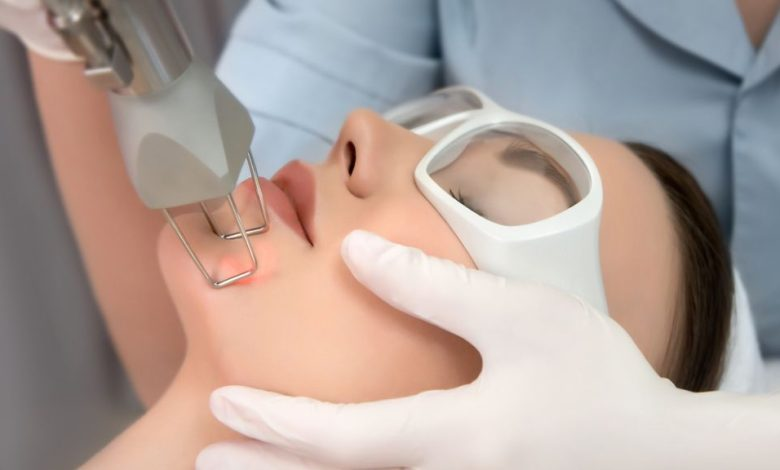
The Fractional Carbon Dioxide Laser (CO2 laser) has become a popular choice for addressing a variety of skin concerns, including wrinkles, acne scars, and pigmentation. However, before opting for this procedure, it’s crucial to assess whether it's suitable for all skin types. This non-invasive treatment is known for its efficiency in resurfacing the skin by targeting deeper layers, promoting collagen production, and revealing smoother, more youthful skin. Despite its effectiveness, many people wonder if it’s safe for everyone, especially considering the variations in skin types and tones.
Understanding Fractional Carbon Dioxide Laser Technology:
The Fractional Carbon Dioxide Laser in Dubai (الفراكشنال ليزر ثاني أكسيد الكربون في دبي) works by emitting short pulses of concentrated light energy that target damaged skin cells. The laser is designed to penetrate deeply into the dermis without harming the surrounding tissue. As the laser beams are fractional, only a small portion of the skin is treated at a time, allowing for quicker healing and less downtime compared to traditional CO2 lasers.
This procedure is often used for skin resurfacing, improving texture, and treating conditions such as wrinkles, acne scars, and sun damage. The fractional approach provides a significant advantage in terms of safety and effectiveness, as it reduces the risk of side effects and accelerates the healing process. But while it has proven to be effective for many, its safety profile can vary depending on an individual’s skin type.
Skin Types and Laser Compatibility:
When it comes to the Fractional Carbon Dioxide Laser, skin type plays a crucial role in determining the safety and effectiveness of the treatment. The Fitzpatrick scale, which classifies skin types based on their reaction to UV exposure, is often used to assess the risk involved.
Type I and II (Light Skin): These skin types typically react well to laser treatments. They have a lower risk of hyperpigmentation or scarring, making them ideal candidates for fractional CO2 laser therapy. The laser’s ability to penetrate deeper layers without causing damage to the surface skin is well-tolerated.
Type III and IV (Medium to Olive Skin): People with these skin types may experience favorable results, but there is a slightly higher risk of developing hyperpigmentation or hypopigmentation. However, with proper treatment settings and post-care, these risks can be minimized.
Type V and VI (Dark Skin): These skin types are at the highest risk for complications such as hyperpigmentation, keloid scarring, and post-inflammatory hyperpigmentation (PIH) following fractional CO2 laser treatments. Due to the high melanin content, the skin may react more aggressively to the laser, making it essential to exercise caution.
Potential Risks and Side Effects for Different Skin Types:
While the Fractional Carbon Dioxide Laser is an effective treatment, it is not without its risks, especially for individuals with darker skin tones. For lighter skin types, the treatment is generally safe, but some risks remain. These include redness, swelling, and minor peeling, which typically subside within a few days.
For those with darker skin types, the risks are more pronounced. They may face:
Hyperpigmentation (Dark Spots): This occurs when the skin becomes inflamed after the treatment, leading to darker patches. The risk increases for people with darker skin as they produce more melanin.
Hypopigmentation (Light Spots): In some cases, the laser can damage the melanin-producing cells, leading to lighter patches that may take months to heal.
Scarring: Individuals with darker skin tones are more prone to scarring, including keloids, which are raised scars that may form due to the healing process.
Post-Treatment Care for Different Skin Types:
Regardless of skin type, post-treatment care is essential in ensuring the Fractional Carbon Dioxide Laser produces the desired results without complications.
For Light Skin Types: After the treatment, patients should avoid sun exposure and use moisturizers to maintain hydration. Applying sunscreen regularly is crucial to prevent sun damage and protect the skin from any potential post-treatment pigmentation changes.
For Medium and Olive Skin Types: In addition to the typical post-care for light skin, individuals with medium to olive skin tones should be especially vigilant in using broad-spectrum sunscreen with SPF 50 or higher. They may also benefit from using calming agents or products designed to reduce redness and irritation.
For Dark Skin Types: People with dark skin should take extra precautions. A longer healing time may be required, and the use of skin lighteners or gentle exfoliants may help to minimize hyperpigmentation risks. Regular follow-ups with skincare professionals can guide the recovery process and ensure that any signs of pigmentation issues are addressed immediately.
Why Fractional Carbon Dioxide Laser Might Not Be Suitable for All
While the Fractional Carbon Dioxide Laser is effective in treating various skin conditions, it may not be the best option for everyone, especially for those with certain skin conditions like active acne or eczema. The deep penetration of the laser can irritate these conditions, worsening the problem instead of alleviating it.
Moreover, individuals with sensitive skin, particularly those with rosacea or severe sun damage, may experience prolonged redness or discomfort. Those who have a tendency to develop keloid scars should be cautious, as the procedure might exacerbate scarring tendencies.
Alternatives to Fractional CO2 Laser for Sensitive Skin
For individuals with darker or more sensitive skin, several alternatives to the Fractional Carbon Dioxide Laser can help achieve similar results without the same risk of complications. Some of these alternatives include:
Fractional Erbium Laser: This is a less aggressive option that works well for individuals with darker skin. It has a shorter wavelength, meaning it causes less heat damage to the skin, which can reduce the risk of hyperpigmentation.
Radiofrequency Treatments: These treatments use heat energy to stimulate collagen production without the need for deep skin penetration. They are considered safer for individuals with darker skin tones.
Microneedling: This treatment involves tiny needles that create micro-injuries in the skin to promote collagen production. It is less likely to cause pigmentation issues compared to laser treatments.
Conclusion:
In conclusion, the Fractional Carbon Dioxide Laser is an effective treatment for various skin concerns, but it is not universally safe for all skin types. Lighter skin tones generally respond well to the treatment with minimal risks, while individuals with darker skin tones may face complications such as hyperpigmentation or scarring. It is essential to assess one’s skin type and consult with a skincare professional before undergoing this procedure. While the laser can offer excellent results, choosing the right treatment method tailored to individual skin needs ensures both safety and efficacy in achieving the best possible outcomes.













